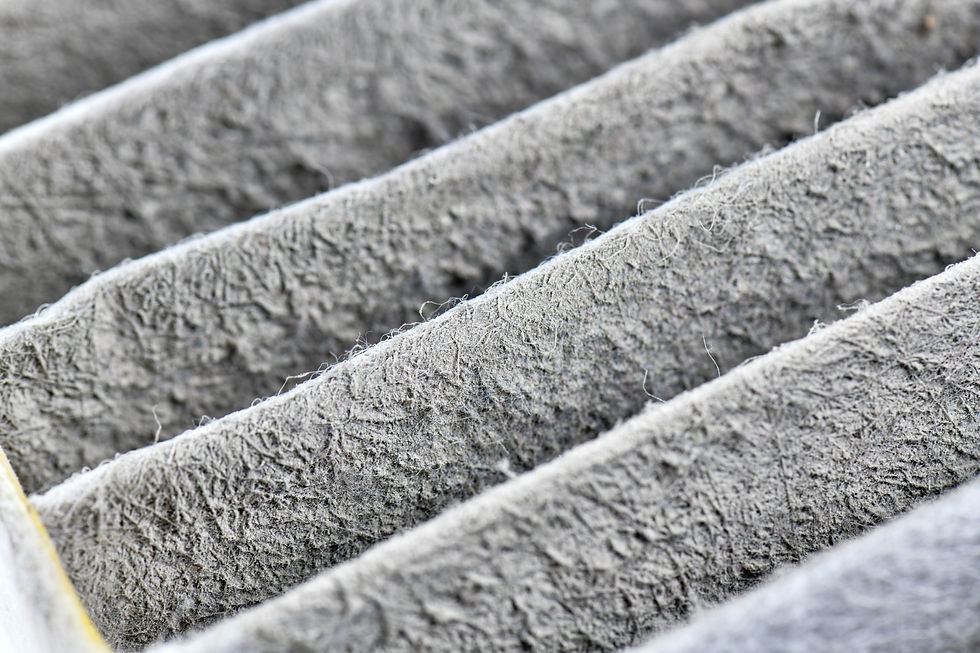How Off-Gassing Affects Indoor Air Quality
- Jennifer Crowley
- Jul 30, 2023
- 3 min read
Updated: Jul 9, 2024

You’ve likely noticed a distinct smell when introducing newly-manufactured products into your home or office. This scent can be present in a range of items, from freshly-painted walls to new carpets, mattresses, or furniture. However, what we often call the “new smell” could be a sign of potentially-harmful off-gassing, which happens when certain products release harmful chemicals into the air.
In this blog, we’ll take a closer look at the sources of off-gassing in both commercial and household settings, explore the impact of off-gassing on health, and offer tips on how to prevent or reduce the speed of the off-gassing process to improve indoor air quality.
What is Off-Gassing and How does it Affect Indoor Air Quality?
During the manufacturing process of various goods, organic chemicals in liquid or solid form can become trapped, leading to off-gassing. As time passes, the product will release these chemicals into the air in the form of gases and particulate matter, known as volatile organic compounds (VOCs). It’s important to note that the presence of VOCs in the air cannot always be detected by smell alone, and the absence of odour does not necessarily mean that the product is not emitting VOCs.
According to the Environmental Protection Agency (EPA), indoor air can contain VOC concentrations typically two to five times higher than those found outdoors. Due to the prevalence of VOCs in manufacturing, a wide range of products can be sources of off-gassing in homes or buildings.
Sources of Off-Gassing in Commercial Settings
Off-gassing can occur in various commercial settings, including office buildings, hospitals, and retail stores. Some common sources of off-gassing in these environments include:
Carpeting and Flooring
Carpets and certain types of flooring can release volatile organic compounds (VOCs) such as formaldehyde and benzene, which can cause eye, nose, and throat irritation, as well as headaches and dizziness.
Paint and Coatings
Many paints, sealants, and adhesives contain VOCs that can be released into the air during and after application. Inhaling these chemicals can lead to respiratory problems and other health issues.
Furniture and Upholstery
Sofas, chairs, and other upholstered items can release flame retardants and other chemicals that can be harmful to human health. Additionally, particleboard and other composite wood products can off-gas formaldehyde.
Cleaning Products
Many commercial cleaning products contain VOCs and other chemicals that can be released into the air during use. This can contribute to poor indoor air quality and can be particularly harmful to people with respiratory issues.
Electronics
A UC Berkeley study found that office electronics, such as computers and printers—especially newer ones—may emit a wide range of VOCs that can accumulate in the air at potentially-harmful room concentrations.
Sources of Off-Gassing
Off-gassing is a concern in households and at the office. Some common sources of off-gassing in homes and at the office include:
Mattresses
Carpets
Dryer sheets
Air fresheners
Cleaning products
Cosmetics and personal care products
Markers, Sharpies and other art supplies
Impact of Off-Gassing on Health
Off-gassing can have a range of adverse health effects, depending on the chemicals involved and the length and intensity of exposure. Some possible health effects of off-gassing include:
Headaches
Dizziness
Eye, nose, and throat irritation
Respiratory problems
Nausea
Allergic reactions
Increased risk of cancer
Children, pregnant women, and people with preexisting health conditions may be particularly susceptible to the health effects of off-gassing.
How to Prevent or Reduce the Speed of Off-Gassing
There are several steps you can take to reduce off-gassing in your home or workplace. Some strategies include:
Choosing low-VOC products and materials: Look for certified products low in VOCs and other harmful chemicals.
Ventilating indoor spaces: Use fans, air purifiers, and other ventilation systems to keep indoor air fresh and circulating.
Cleaning regularly: Regular cleaning can help remove dust and other particles contributing to off-gassing.
Allowing for air exchange: When possible, open windows and doors to allow fresh air to circulate.
Speeding up off-gassing: If you’re dealing with a new product that is off-gassing, such as a new piece of furniture, you can speed up the process by placing it in a well-ventilated area and turning on fans to encourage air circulation.
By taking these steps, you can help to reduce the impact of off-gassing on your health and well-being.





















